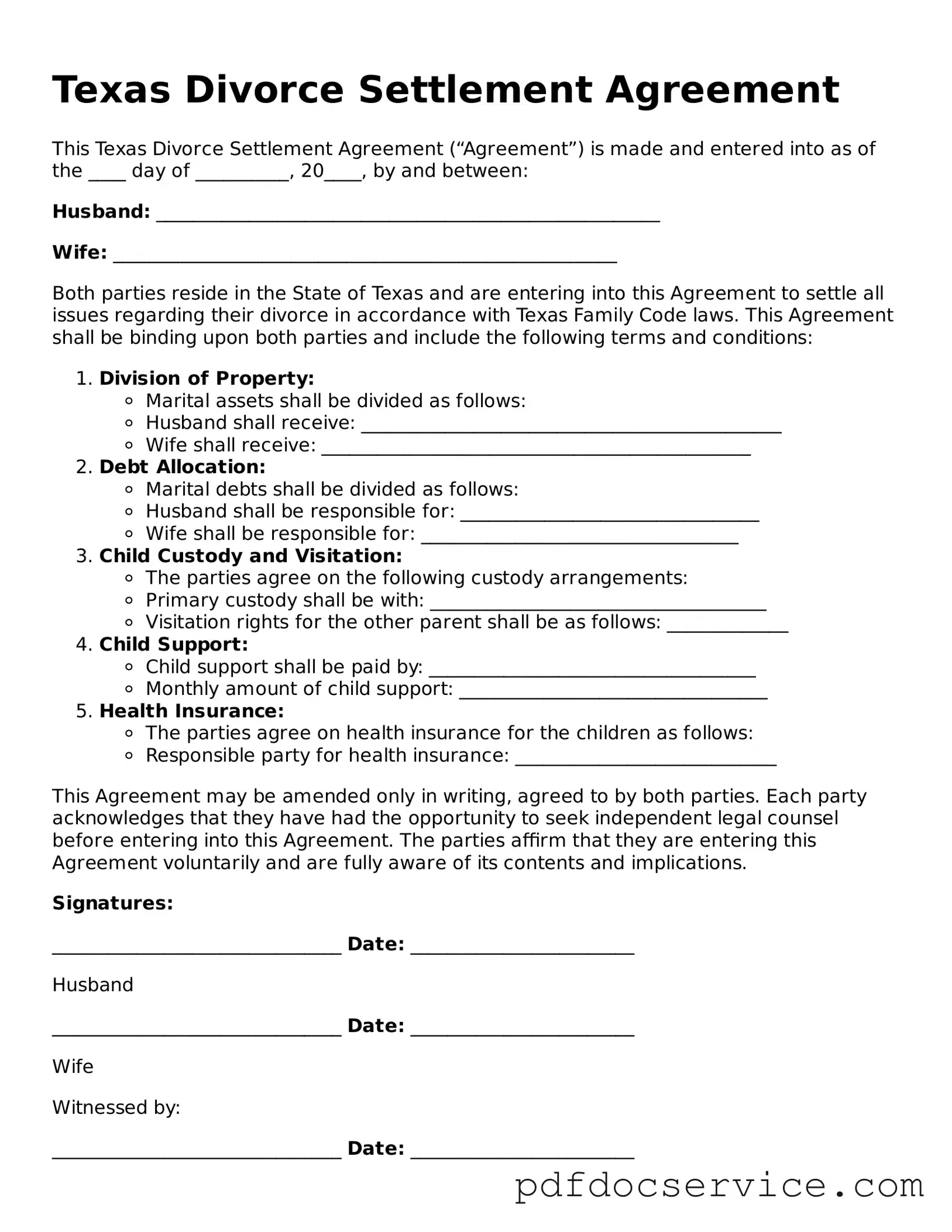Printable Divorce Settlement Agreement Template for Texas
The Texas Divorce Settlement Agreement form is a crucial document that outlines the terms of a divorce, detailing how assets, debts, and child custody will be divided between spouses. This agreement serves as a roadmap for both parties, ensuring that their rights and responsibilities are clearly defined. Understanding this form is essential for anyone navigating the complexities of divorce in Texas.
Open Divorce Settlement Agreement Editor
